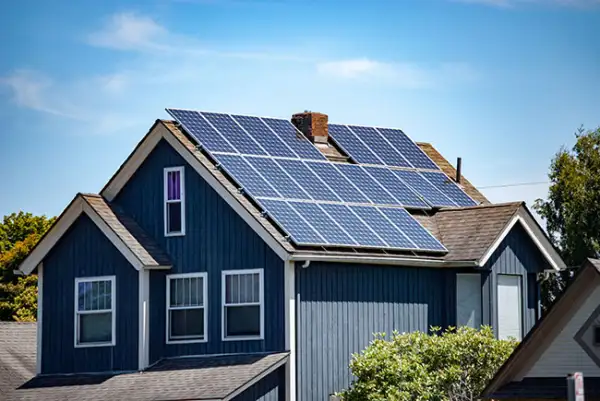4 Home Upgrades That Will Save Energy and Money

When it’s warm and sunny out, the last thing on any homeowner’s mind is energy bills. But it pays to consider them now: depending on the project, an energy-saving home upgrade could shave hundreds off your energy bills come winter.
For some projects, saving energy -- and money on energy bills -- is more feasible than ever. Take, for example, the falling upfront cost of solar power. Other home improvements, like tweaks that help maintain indoor temperature, remain as valuable as ever.
In honor of Earth Day, here are four home improvements that can save you energy as well as money:
Harness the Sun
$15,000–$30,000
The cost to install solar panels has dropped by two-thirds since 2010, according to the Energy Department. Expect to pay $15,000 to $30,000, depending on the size of your home and how much power you need, reports home-improvement website HomeAdvisor. You should get a big chunk of that back almost immediately, however, in the form of a federal tax credit worth up to 30% of your outlay.
Going forward you can also count on estimated electricity cost savings of $500 to $1,500 a year, according to solar marketplace EnergySage. Kick in additional state tax incentives, and the project should eventually pay for itself. Plan to get quotes for installation costs and estimated electricity savings from at least three companies certified by the North American Board of Certified Energy Practitioners, says Ben Delman, communications director at Solar United Neighbors, an advocacy group.
Homes best equipped for going solar are those without structures like chimneys or dormers that complicate installation, Delman says. It also helps to have a roof that faces south, with lots of direct sunlight, and that won't require work anytime soon: Though most solar installations are under warranty for 25 years, they can make roof repairs a hassle.
Install smart lights
$100-$600
Replacing your old, incandescent light bulbs with WiFi or Bluetooth-enabled versions that save energy and make your light switch obsolete is an energy-effective way to move your home into the future. Companies from GE to IKEA manufacture these so-called smart bulbs that often, but not always, require connection to a central hub. The bulbs you can turn on or off from anywhere aren’t just high-tech.
Assuming you haven’t already upgraded to LED or CFL bulbs, they will also cut the cost of lighting your home by half or more. A starter kit of four lightbulbs plus hub device from Philips Hue, one of the systems favored by gadget site Tom’s Guide, is $100. Packs of four additional bulbs cost $50. Considering the average home has close to 40 light bulbs, you can outfit your entire home with smart bulbs for $550.
Insulate the attic
$1,350
If your house is one of the nine in 10 U.S. homes that are under insulated, fixing the problem can cut your heating bills by about 10%, according to the Environmental Protection Agency. And if those monthly savings aren’t enough incentive, proper attic insulation also boosts the value of your home, according building industry trade publication Remodeling Magazine. The average cost to install fiberglass attic insulation in 2017, according to Remodeling, was $1,343.
So, does your house stand to benefit from new insulation? Chances are good if it was built before 1980 or your winter heating bills regularly top your neighbors, says Dan DiClerico, in-house expert at renovation website HomeAdvisor. To find out for sure, check the attic for at least 11 inches of fiberglass insulation or eight inches of cellulose insulation. “If it’s dirty, that’s a good sign that it’s at the end of its service,” he says.
Replace old windows
$2,500–$7,500
It seems like a no-brainer that replacing old windows with energy efficient ones can save you money — anywhere from $25 and $450 a year in heating and cooling costs, according to the government’s Energy Star program — on heating and cooling costs. But that’s not the only reason to upgrade. New windows can do a lot to freshen your home’s appearance, while also eliminating drafts that can quickly turn off prospective buyers when you go to sell, says Buffalo, N.Y. home appraiser Jim Murrett.
That said, new windows, a project that costs homeowners $5,000 on average, according to Zillow Talk, aren’t always necessary. Look for rotting frames or condensation between window panes as surefire signs it’s time to replace your windows, says HomeAdvisor’s DiClerico. If the glass is damaged but the frames are in good shape, homeowners might be able to save up to 25% by partially replacing the windows with window inserts that fit inside the existing frame, he adds.